When it comes to schools, communities often know best. Maybe not always, but often. And it looks like in the case of 81st Street School – in the Cooper Park neighborhood on the city’s West Side – that’s the case.
Though MPS administration needed a bit of convincing, the school’s program was merged with the successful early childhood program at 68th Street School two years ago.
As part of that merger, a design team – led by retired MPS regional executive Grace Thomsen – was assembled, bringing parents, teachers, facilitators and neighborhood representatives (disclosure: I was on the team in the latter capacity). The team met weekly to examine data, conduct school community research, hear experts and discuss the future programming of the school.
The result was a school that would build upon the high-quality early education program and a committed existing staff by making 81st Street School one of the earliest adopters in MPS of the personalized learning model that takes an approach customized to capitalize on students’ strengths, needs and learning styles. The school would also get a STEM (science, technology, engineering and math) and Spanish language focus.
A 2011 U.S. Department of Education presentation says, “Personalized learning is paced to student needs, tailored to learning preferences and customized to the specific interests of different learners.” It often draws heavily on classroom technology.
This year, personalized learning was introduced in the first grade classrooms at 81st Street School and the early results are positive and reassuring: test scores for the first graders have risen above the district average.
“I think things are going very well at 81st Street School this year,” says Rhea Robinson, the parent of second grade and K4 students at the school, who served as a parent representative on the design team.
“The atmosphere at the school has definitely changed. Coming from 81st Street before the merger, I can see some real positive changes. The younger classrooms are multicultural. There is a PSO that organizes school functions and events like Donuts for Dads. It is not the same 81st Street School.”
The administration is not the same, either. After a string of short-term leaders, Dr. Ronald Cox, an educator with nearly 20 years’ experience as a teacher, assistant principal and administrator in Georgia and Department of Defense Schools, moved to Milwaukee to serve as principal.
Cox walked into a struggling school, which might as well have had a revolving door to the principal’s office. It was also a building in which two school communities – students, teachers and parents from 81st Street and 68th Street Schools – were learning to live and work together after something of a rocky start.
Though a few parents and staff members I’ve talked to, including some not quoted here, expressed some concern about leadership, their skepticism must be seen in light of the unsettled culture at the school in recent years. Cox walked into a very disrupted situation.
“I found a lot of people concerned about the direction of the school and hoping that there would be adequate resources and structures and opportunities to move those programs that were the focus, the academic focus, from the merger forward,” he told me on a recent visit to the school.
“I think there was still a concern for some of the programs we thought the school had identified that they wanted in school. I think, for the most part, people were positive and wanted me to get involved with them.”
Cox said he met one-on-one with staff members last summer and he found a team that was willing to do what it takes to get Eighty-First Street School on track.
“Everybody was willing to volunteer their time and come in and just talk about what went well last year, what optional things that we could do to make things better for them this year, what are some of the goals they had in mind,” he said. “I felt the need to be pretty positive.”
“There may have been a little bit of skepticism. (But) I didn’t get that tone, or that feeling, that vibe from everyone.”
Though it’s too soon and the data still too sparse to trumpet the success of the school’s personalized learning approach, the numbers are encouraging. But, you don’t need numbers to see the promise. Just walk into Lyn Mucha’s first-grade classroom.
The kids are engaged in a variety of activities. Some are working alone, but most are in pairs or small groups. Mucha and her teaching partner Andrea Armstrong (Anna Klusmeyer is also part of the team) work the room, helping guide kids in their work. After a few months of getting the kids to approach classroom work differently, she told me later, the classroom is humming.
“They’re pretty independent,” she said. “It’s a lot different than it was at the beginning of the year. It took a lot to become independent. But they’re just doing beautifully now. They ask for learning pieces throughout the whole day. They’re so goal-minded. Half the time they don’t realize that they’re meeting their goals. They think they’re just playing games. The kids really find their own self-direction.”
Mucha and her colleagues have spent a lot of time studying the personalized learning programs at Goodrich Elementary School, Hi-Mount Community School and Ronald Reagan College Preparatory High School in the district, but also at schools in other area districts, thanks to participation in CESA-1’s Personalized Learning Network.
CESA-1 has helped the teachers learn first-hand from their colleagues in other schools – through coaching and by other means – that there is no rigid way to implement personalized learning.
“The staff are enjoying that opportunity,” said Cox. “They take pride in what they are doing. They are really eager to make sure that we have it done right. There is probably not a right or wrong way. They are just concerned about trying to make sure that we get the students what they need. Thus the visits to some of the sites that we’ve been to, to get some models, and now they’re understanding that there are variations of the strategy that’s implemented in different places.”
“I’ve let them guide the work that they think they need to have done in their classrooms and structure it the way they need to have it structured. You have more buy-in when you take that approach,” Cox said.
“There is no wrong prescription, because it’s student populations, the demographics and everything else. They are taking that particular program and they are running with it. After we come back from meetings they’re talking with our district folks. We have people visiting and they talk one-on-one to get guidance. They’re forming that program that fits our need right now.
“Within the last three weeks or so we went to Wales and we took a couple of teachers out. They saw what it looked like, they came back, they talked. They met within their grades (the program will be implemented next year in second and third grade). When they came back this year with second and third grade, they continued to meet and collaborate. CESA-1 comes out on numerous occasions and they collaborate with us to make sure that all the elements that we think we are concerned about, and need to have in place, are verified and make it valid for us.”
With nearly a year of first-grade personalized learning under its belt, the teachers are sharing their knowledge with their colleagues at the second and third grade levels, preparing for the launch of the program in those classrooms next year. Though second grade will likely have the easier transition because most students there will also have already had a year of personalized learning.
And, importantly, so will the parents of those kids.
“I think the parents are very much invested and love what’s going on with their kids and seeing the goals that they’ve been achieving,” said Mucha. “It’s the parent component that we have to continue to learn how to do because the kids become so independent that they almost don’t think that their parents still need to support them.”
Parent Robinson doesn’t have any children doing personalized learning yet, but she’s eager.
“It seems that those who have children already participating in personalized learning absolutely love it,” she said. “Although my children are in second grade and K4, I loved it from the start as I have seen the models for this at other schools. I am really excited about having them start personalized learning next year.”
Personalized learning will continue to roll out the following year, encompassing fourth and fifth grades, which most likely will have begun piloting the STEM programming at the school next year. Implementation of Spanish will follow.
At the same time, the K3-8 school will phase out its middle school component over the next three years. The school will not enroll any sixth graders this fall. That is a lot for a school community to take on and Cox is working hard to prevent it overwhelming students and staff.
“We still have some options to play around with,” he said of the implementation. “If you try to give them all STEM, and then give them all personalized learning, it’s just a bit much.”
If there wasn’t already enough on the plate, the school is working with Arts at Large to green the large sea of concrete that is the schoolyard. Cox sees that as one way for the school to engage the surrounding neighborhood.
There was a time when 81st Street – the first school erected by MPS after World War II – was a neighborhood school. The hope in the building and on the surrounding streets is that it will once again be viewed as a solid choice in a neighborhood full of families and school-age children.
“Some of that perceptions from the folks that I talked with is that the parents with the younger students really were a little hesitant to have their younger students attend the school with the mixture of the sixth, seventh and eighth graders in the building,” he said, noting that his challenge will be to counter inaccurate perceptions of the school with the current realities.
“I think the word is spreading. Because a lot of parents are coming out for tours. There are parents who once had their students here, who had enrolled them in other schools, and now they’re coming back. I get a sense that the community is waiting for some of the transitions to take place. Then they’ll probably start enrolling their children as they tour and find from other families, hey, you know, this is a good place to be.”
And there’s a sense that it’s working. While enrollment was projected at 380 this year, that projection – for a school that will have one fewer grade level – is 30 students higher.
But one lingering question remains the merger, which clearly was viewed differently by families and staff at 81st Street than it was by families and staff at 68th Street School. The state of that relationship depends on who you ask.
“I think the camaraderie is really good,” said Mucha. “I think we’re a strong staff and have become even stronger with the merger. I think the merger has been a very positive success.”
Cox concurred. “That’s a done deal. (There are) no conflicts in the building in terms of, ‘this is my wing, this is your wing, this is how we did it over here. This is how we do it here.’ That was one of the talking points when I came in: We’re all one team, for one goal.”
But Robinson said some tension remains.
“I wish that I could tell you that all the merger stuff was behind us,” she said. “Every now and then you can hear a parent or a staff member refer to the merger in a negative way. I think the phasing out of the middle school is where most of the tension lies. I don’t think people realize why the decision was made to phase out the middle school, so they blame the merger and the ill feelings remain.”
“I think (the merger) was the best thing that could have happened to the school. You can see that in the multicultural classrooms in the younger classrooms. We would not have personalized learning in place right now if it weren’t for the merger, nor would we be talking about STEM or world languages. I hope that one day very soon we could say, ‘Merger? What merger?’”
Jeff Spence, the school board director who represents the district in which both 81st Street and 68th Street Schools are located, has visited the merged program and he falls somewhere in the middle in a discussion of school climate.
“I get a sense that you got people who are moving in the same direction, which is great and there’s the sense that personalized learning can offer a key to all kids that is right for them. There’s a lot of enthusiasm for that,” he said. “It’s not unlike any community where you’ve gone through some patches and now you have to fill that trust, you have to build the ownership. And that doesn’t happen overnight.”
“There’s no formula to it either; it’s organic,” he added. “People need to understand that and they need to be open with one another. If they can do that, and they engage parents and they have parents as part of that whole process, like what happened at 68th Street – you had true engagement there and I think that’s one of the things that you see at 81st Street, that same spirit – it’s never about them versus us anymore, it’s one collective. They’re all pushing just to find the best way to impact young people.”

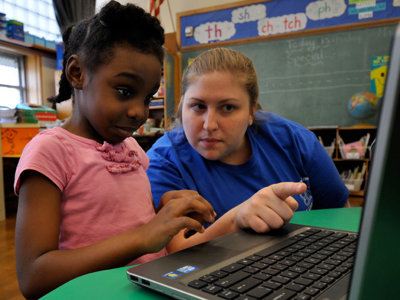
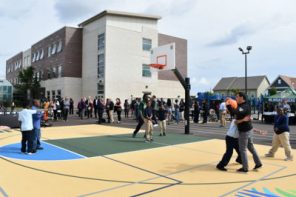 i evaluate to yes even if there's no image
i evaluate to yes even if there's no image  i evaluate to yes even if there's no image
i evaluate to yes even if there's no image  i evaluate to yes even if there's no image
i evaluate to yes even if there's no image 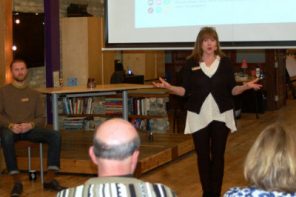 i evaluate to yes even if there's no image
i evaluate to yes even if there's no image 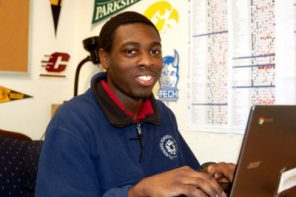 i evaluate to yes even if there's no image
i evaluate to yes even if there's no image 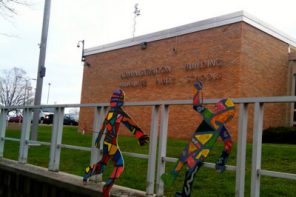 i evaluate to yes even if there's no image
i evaluate to yes even if there's no image